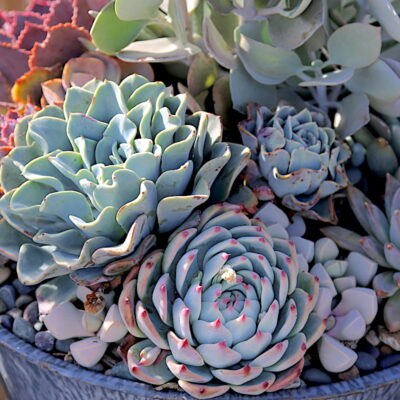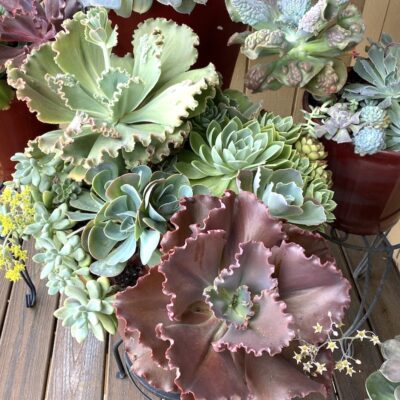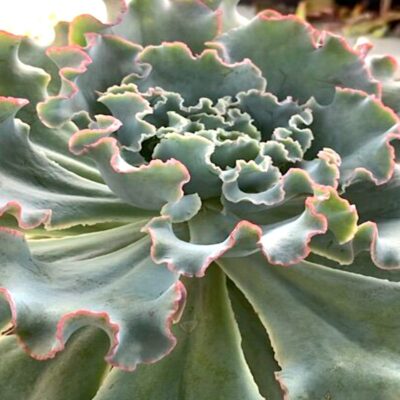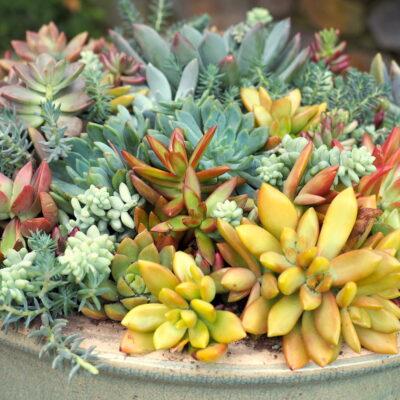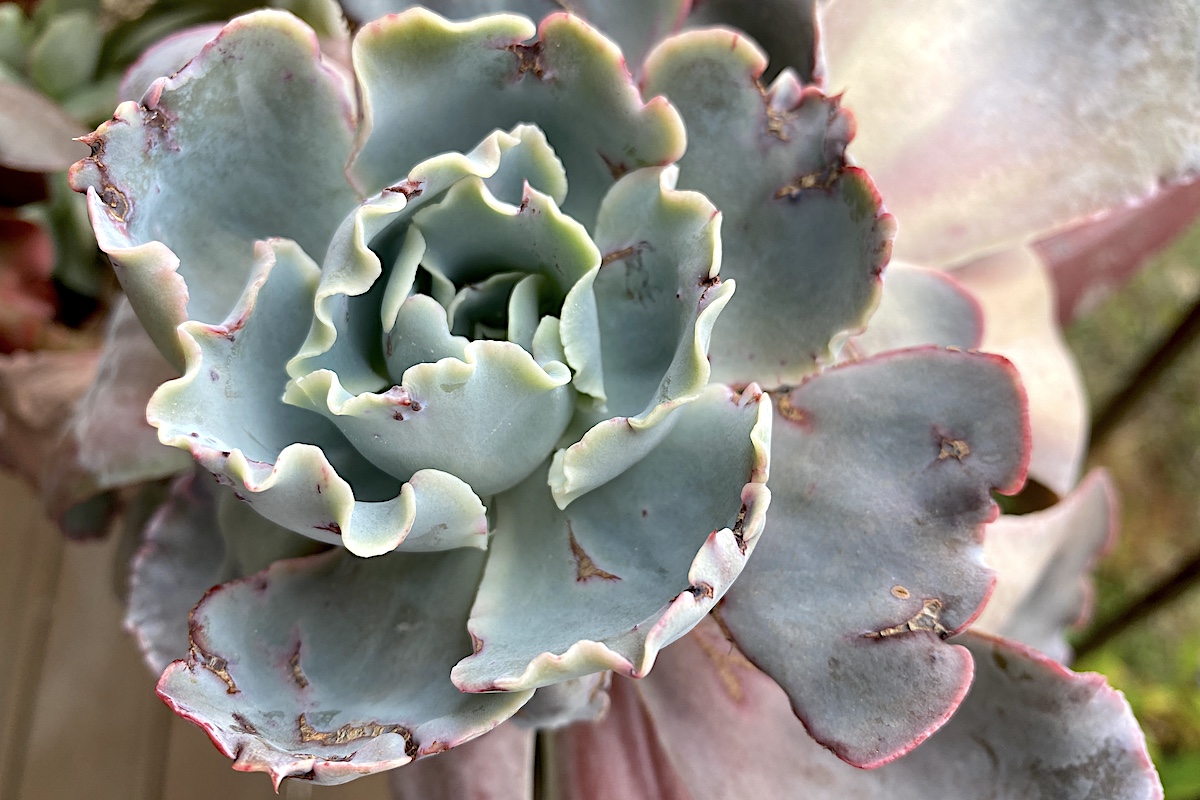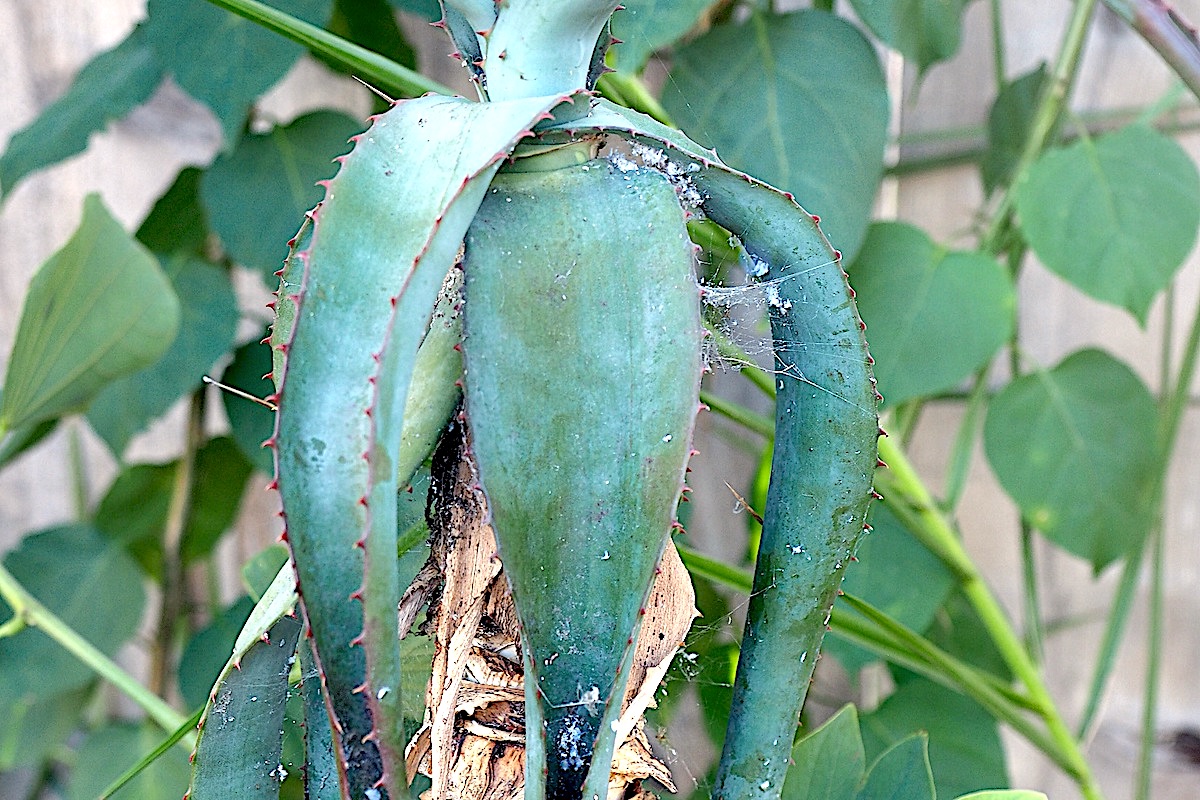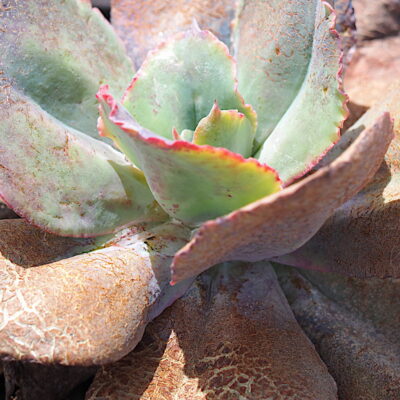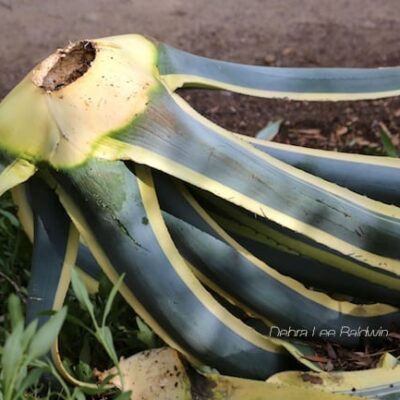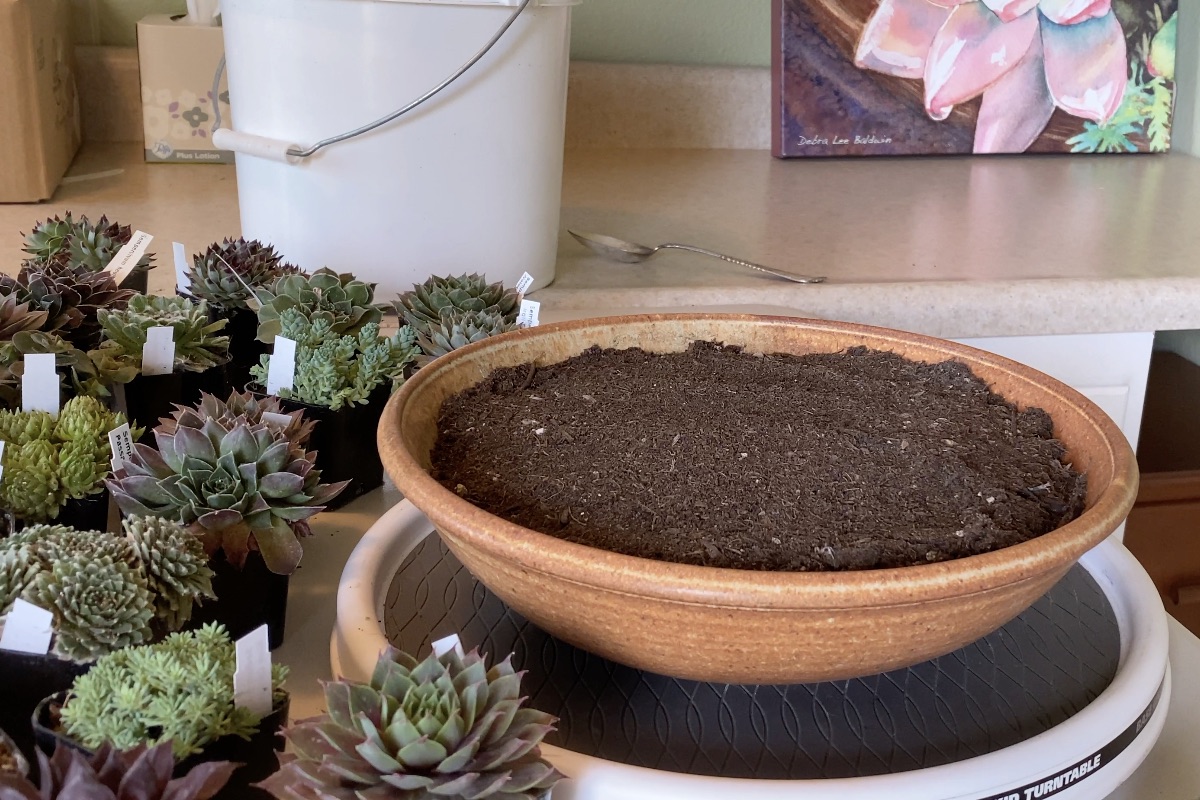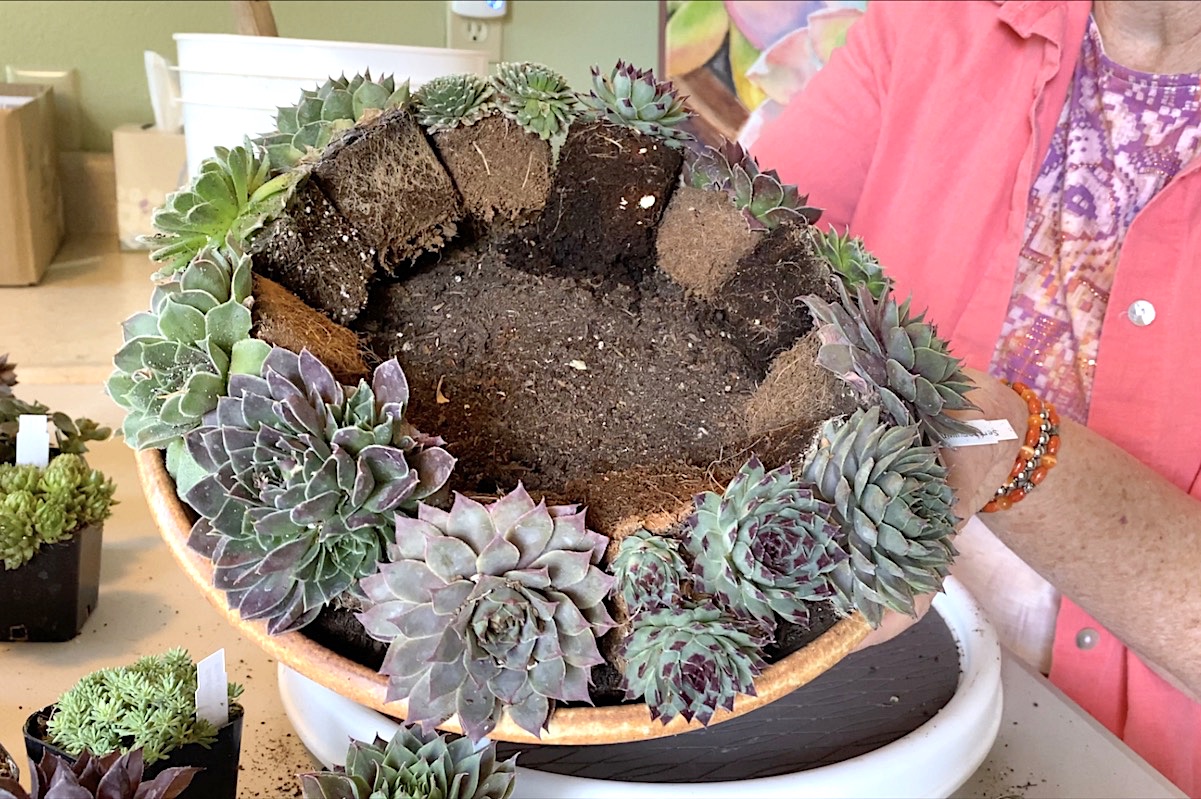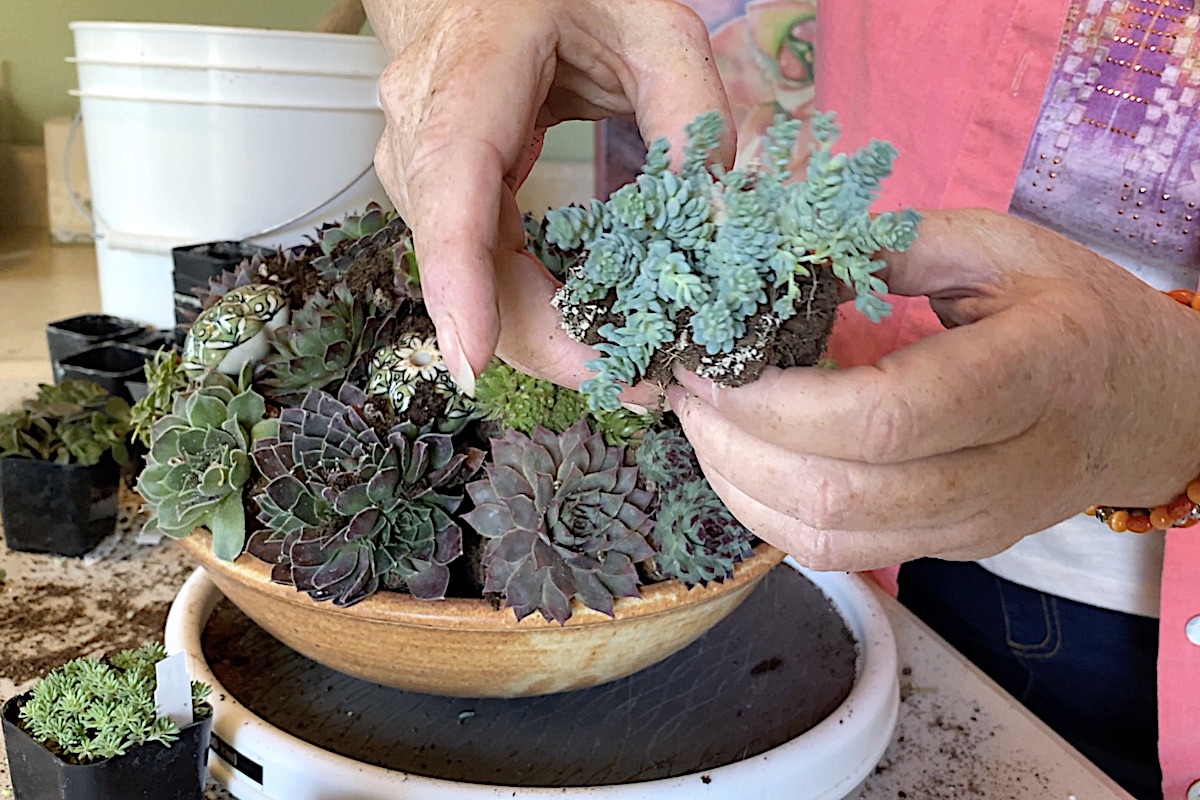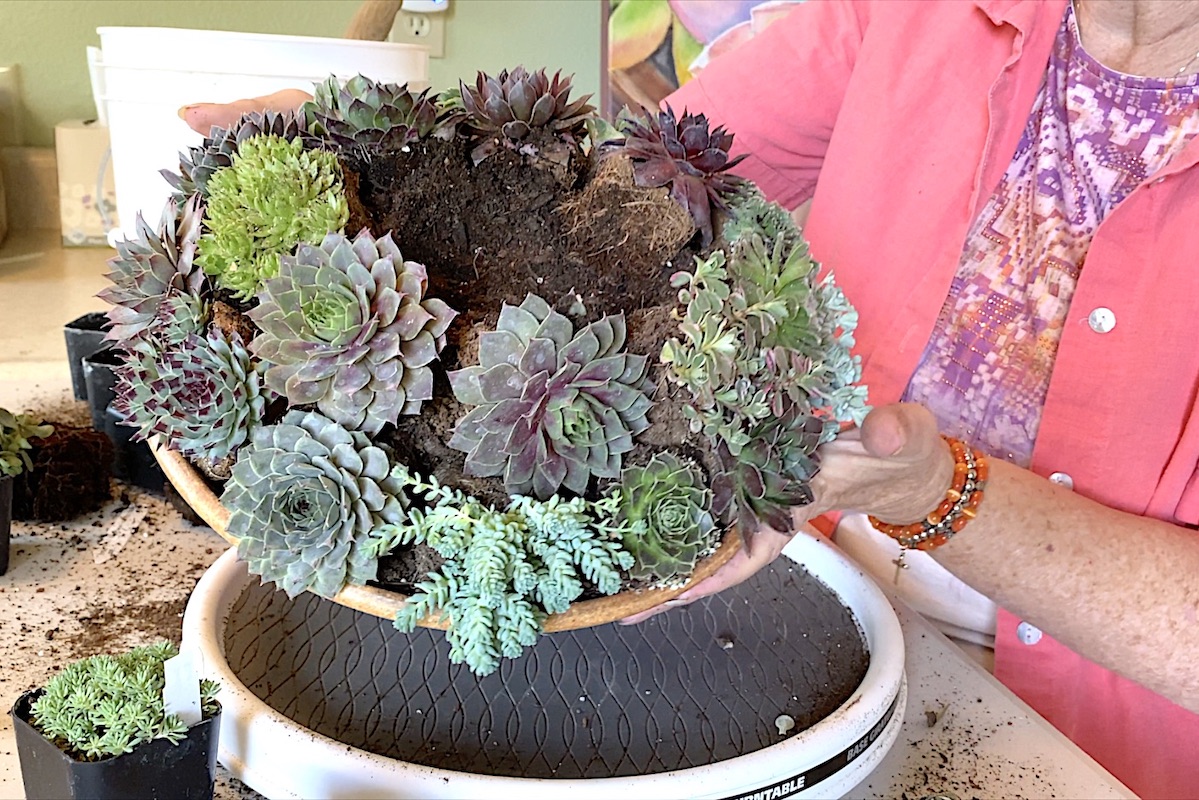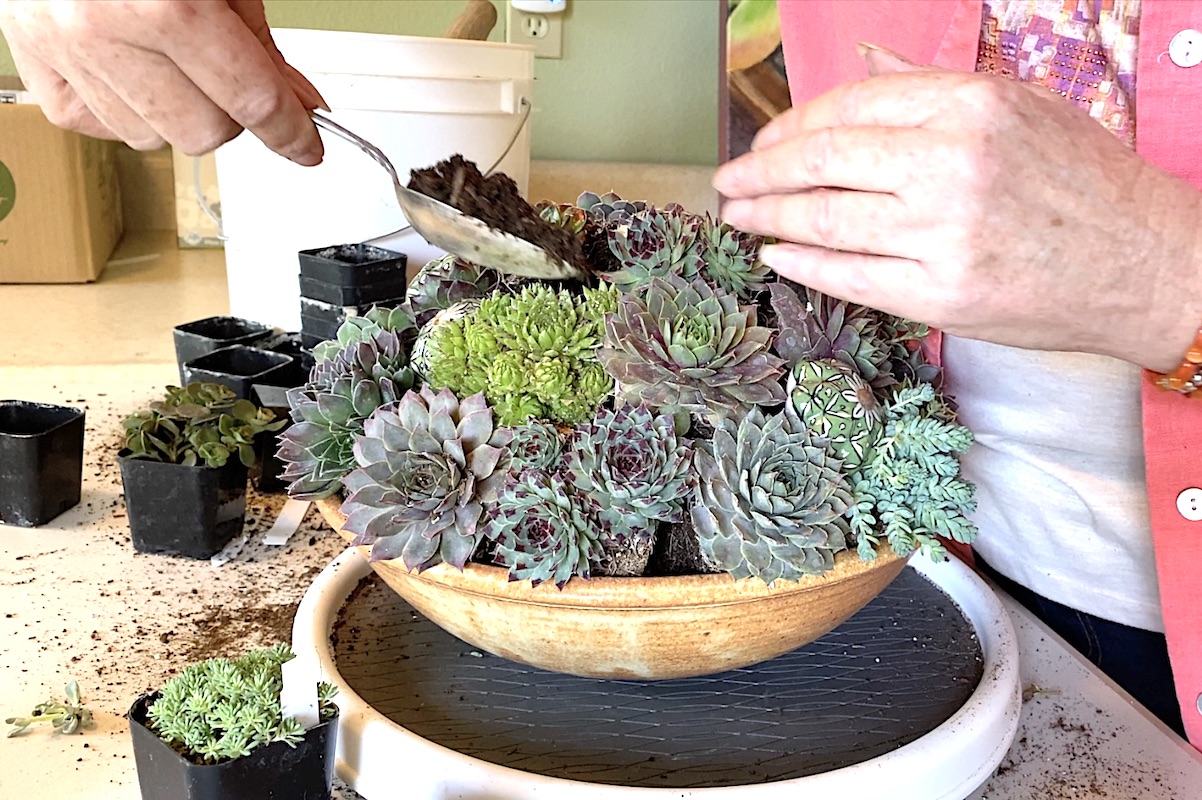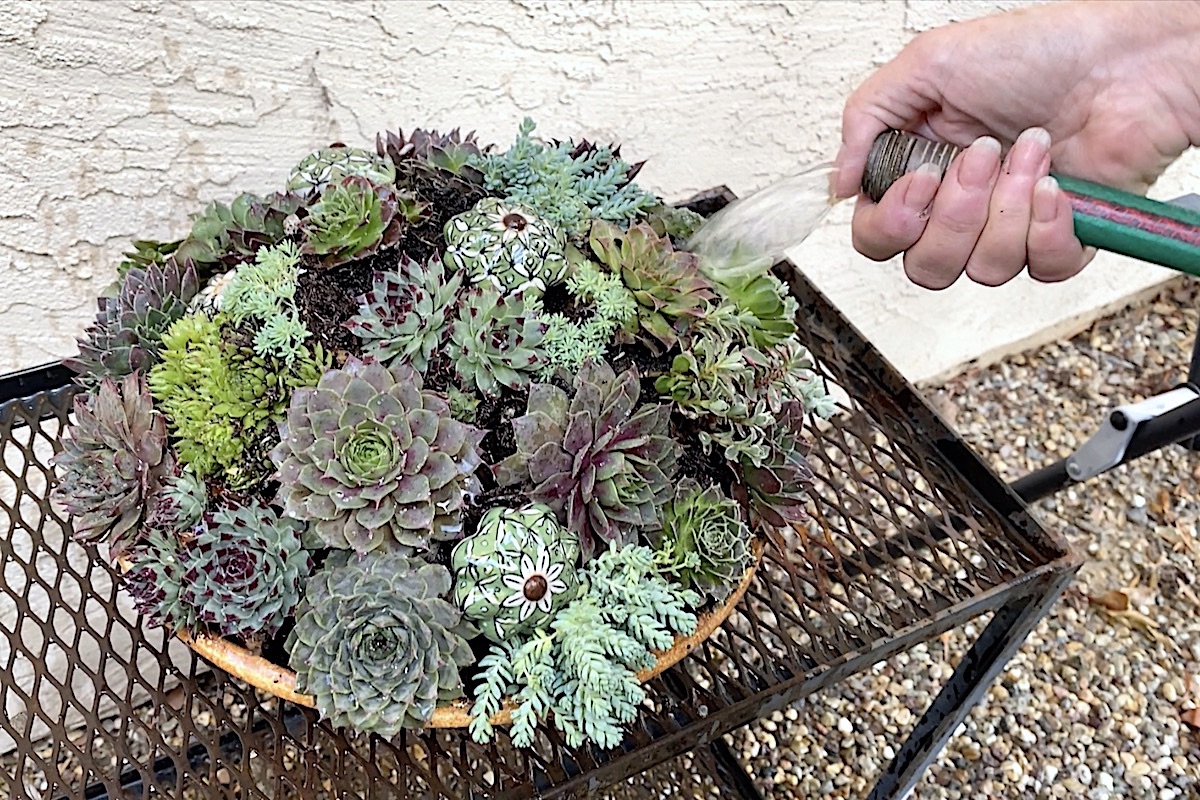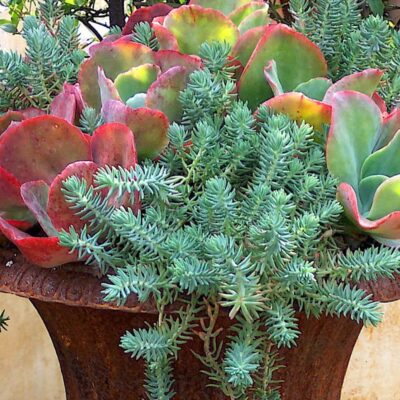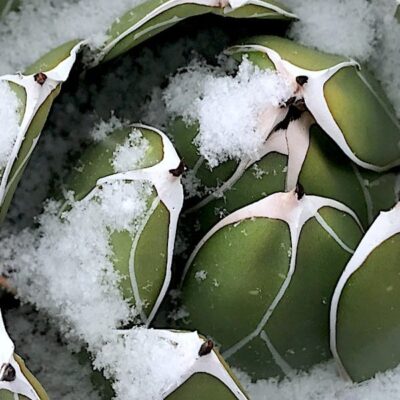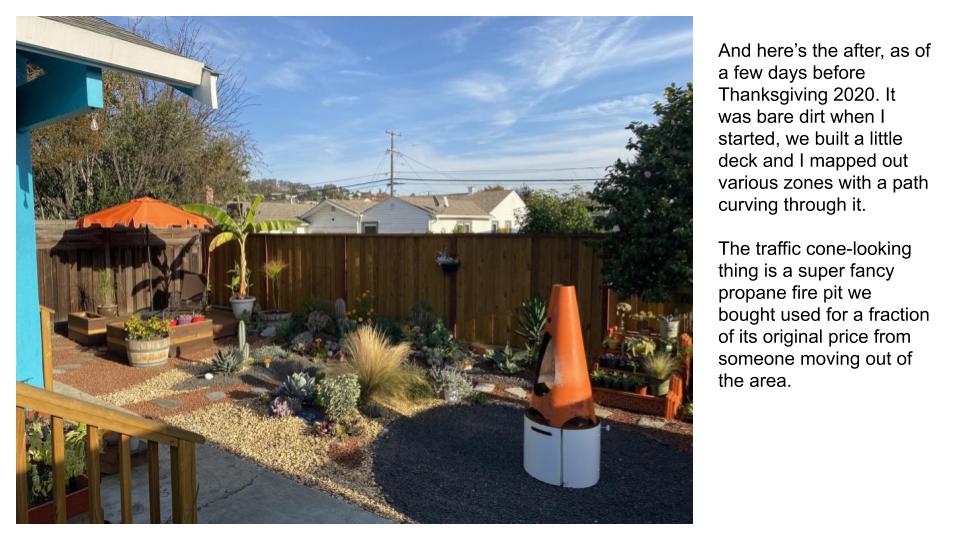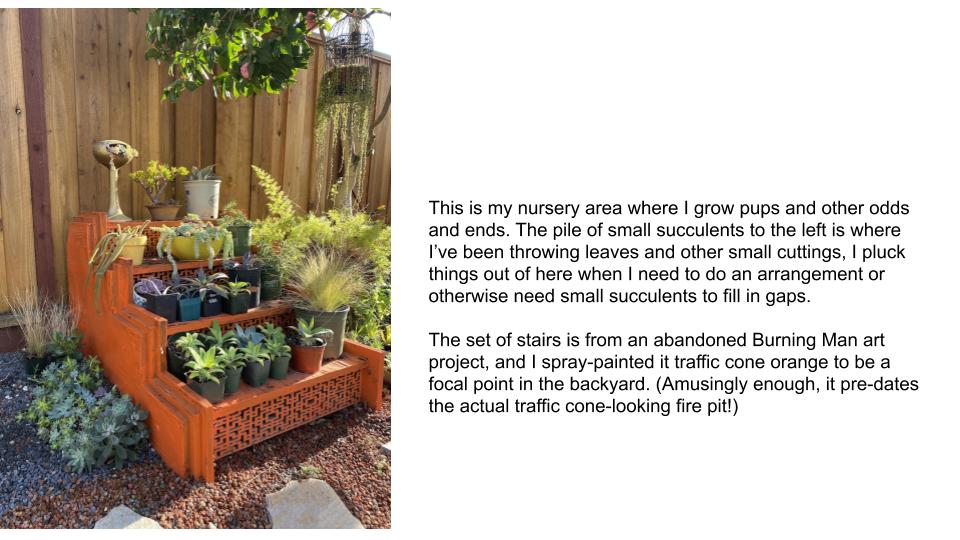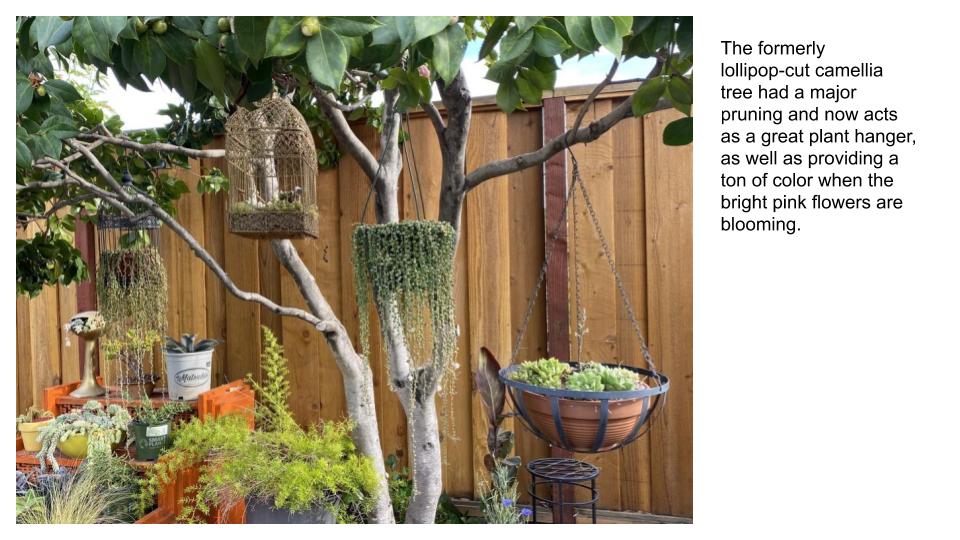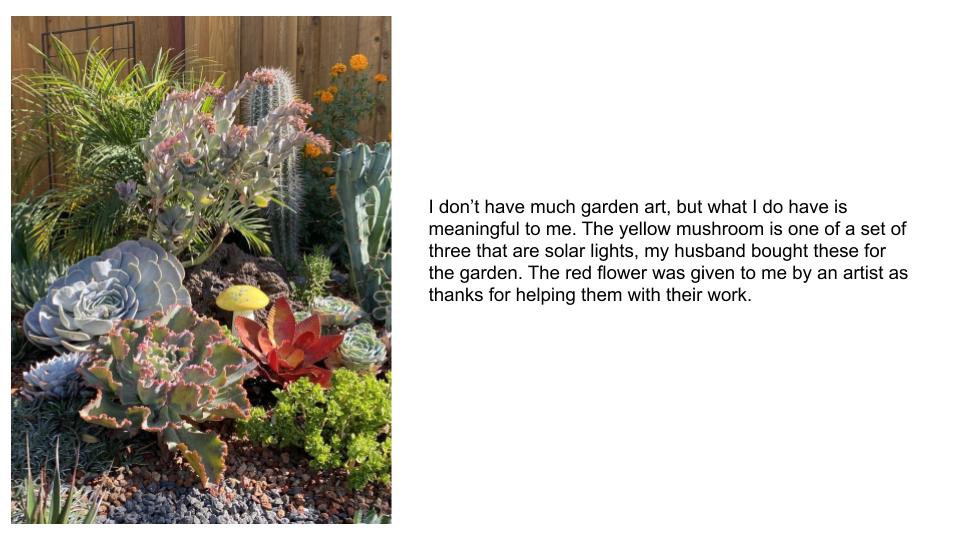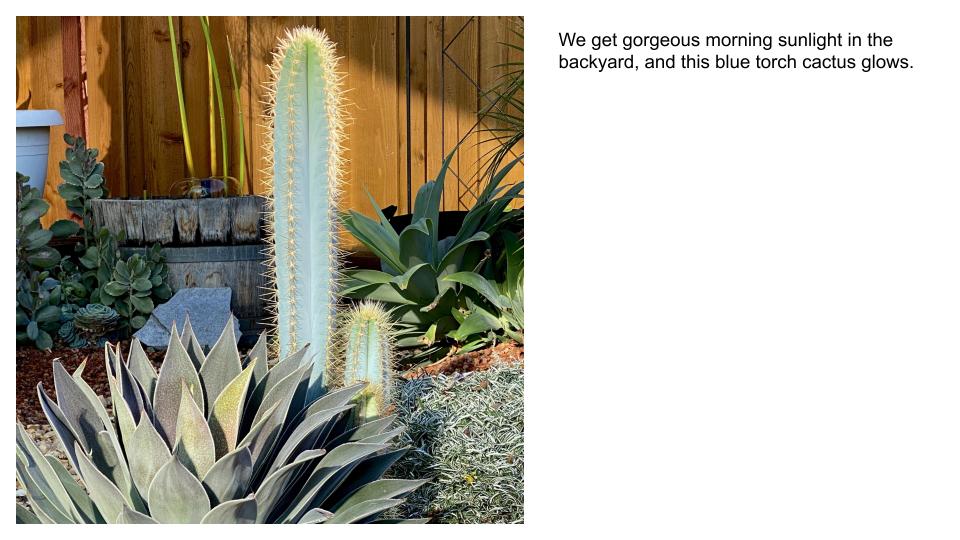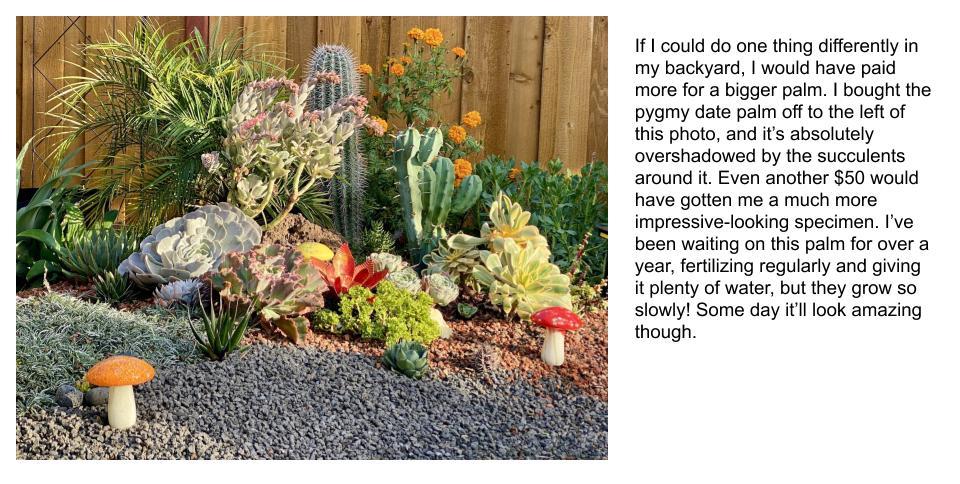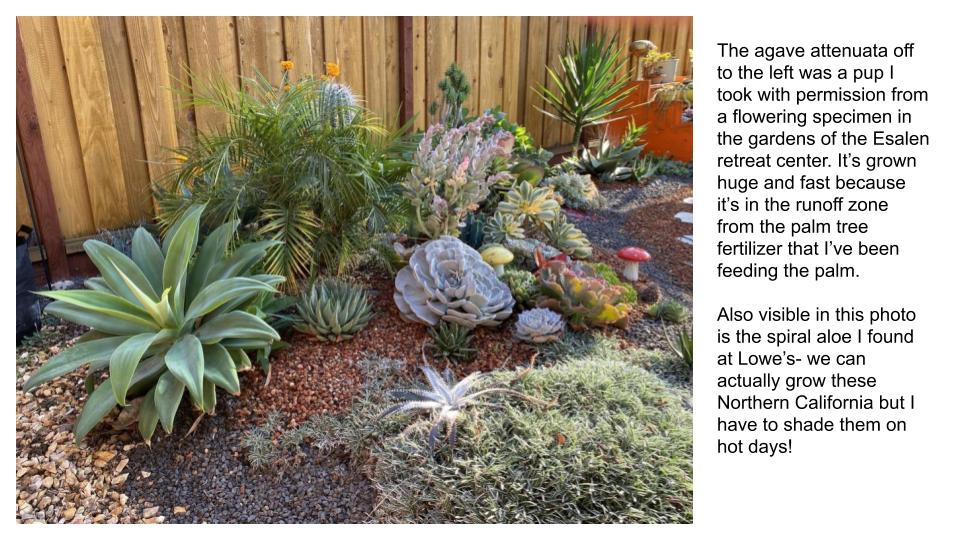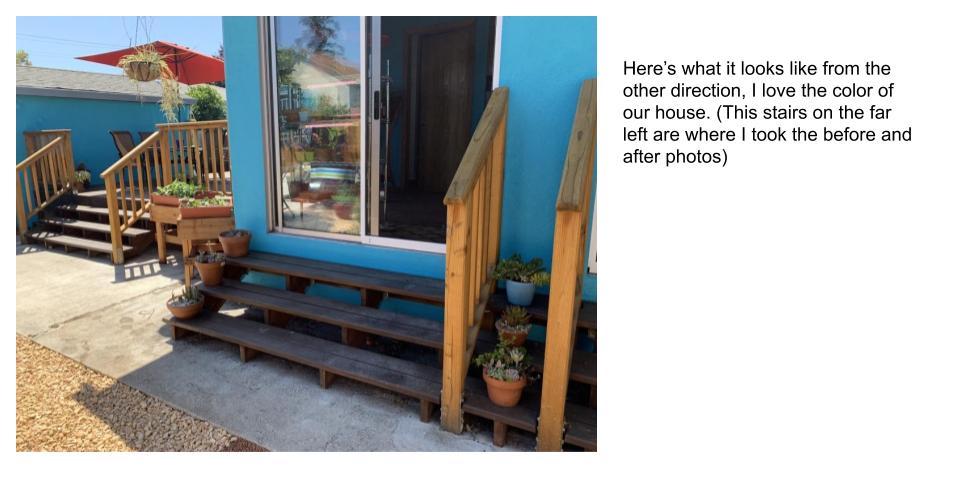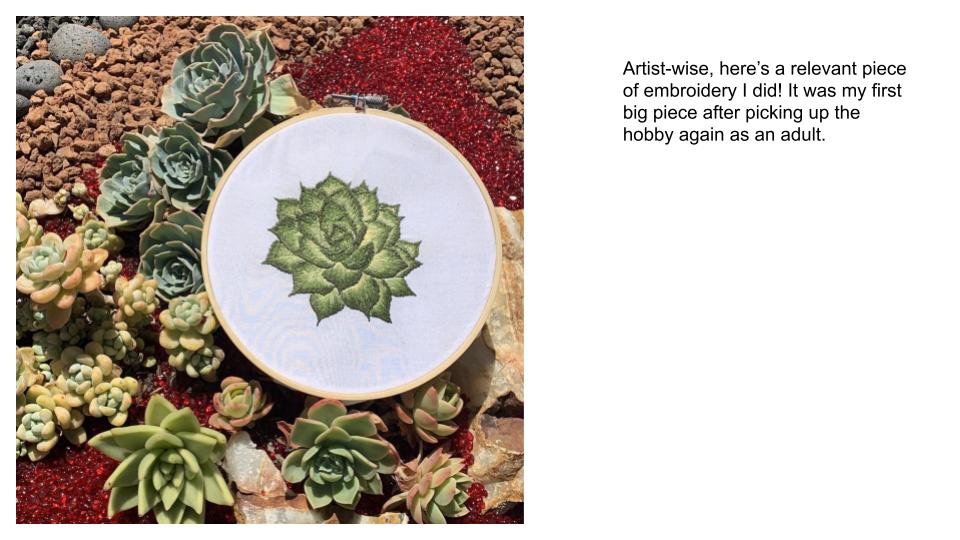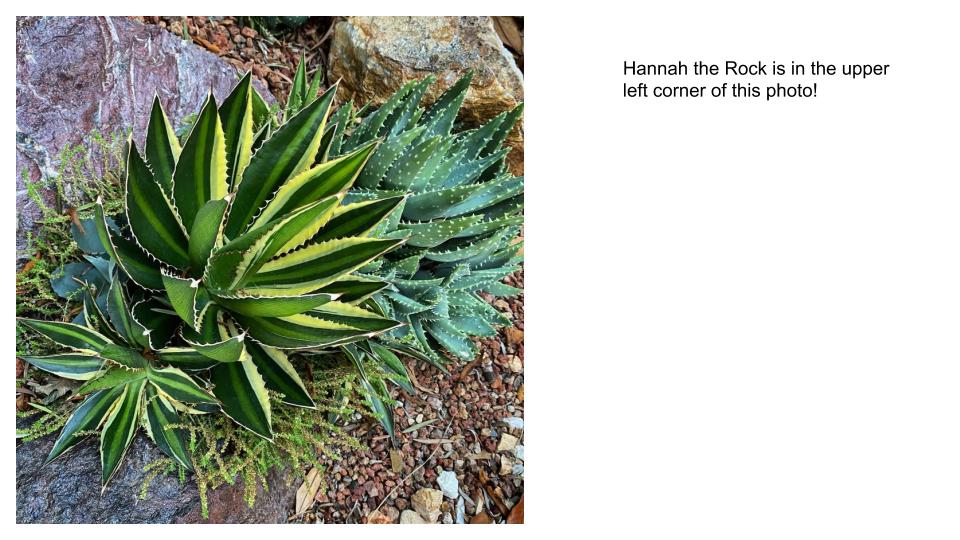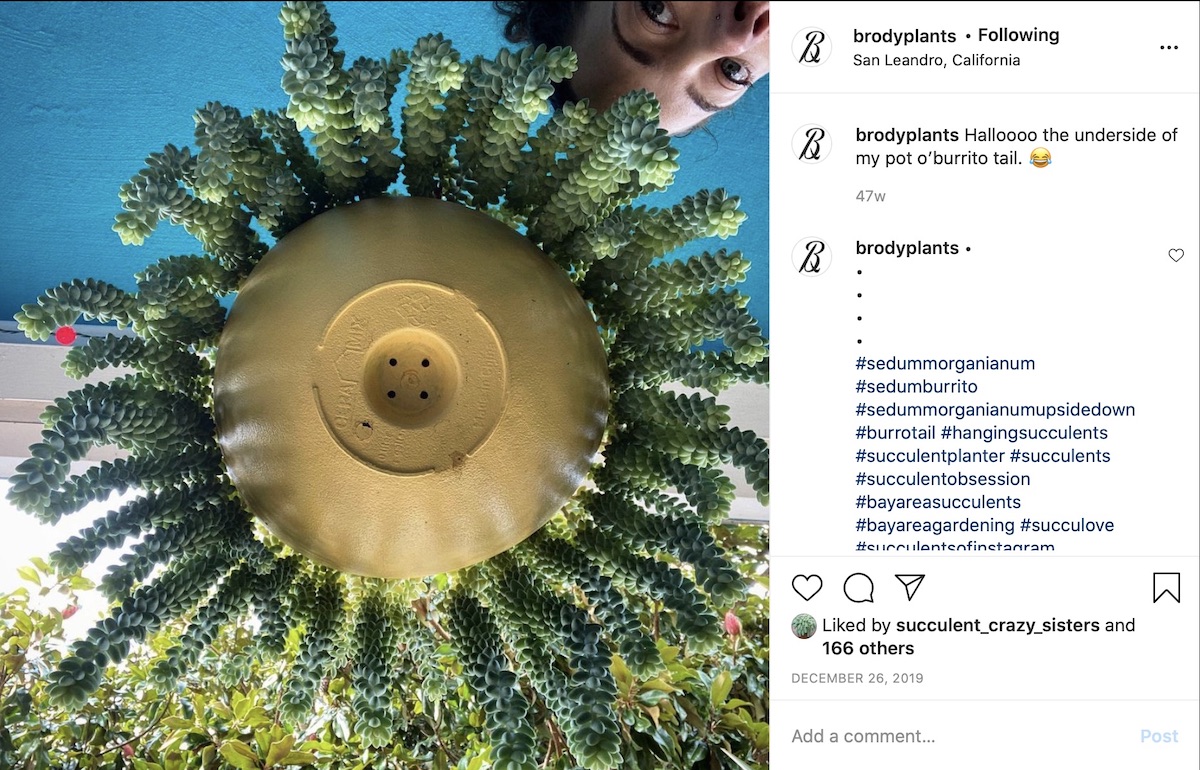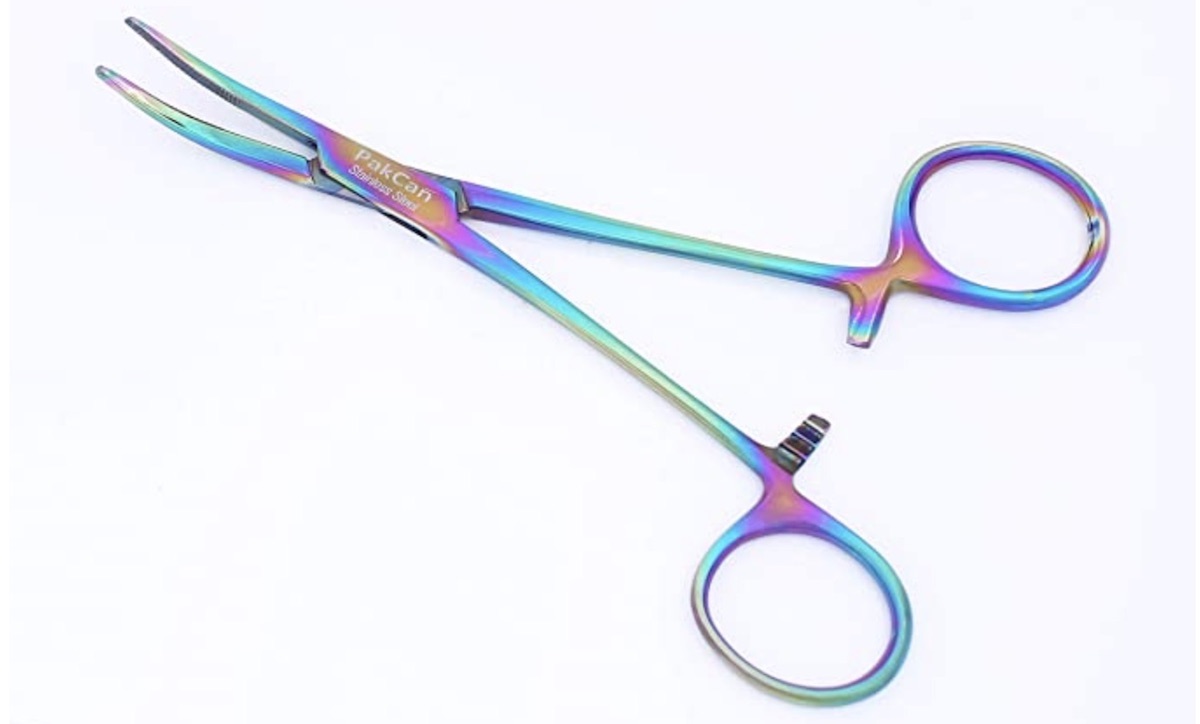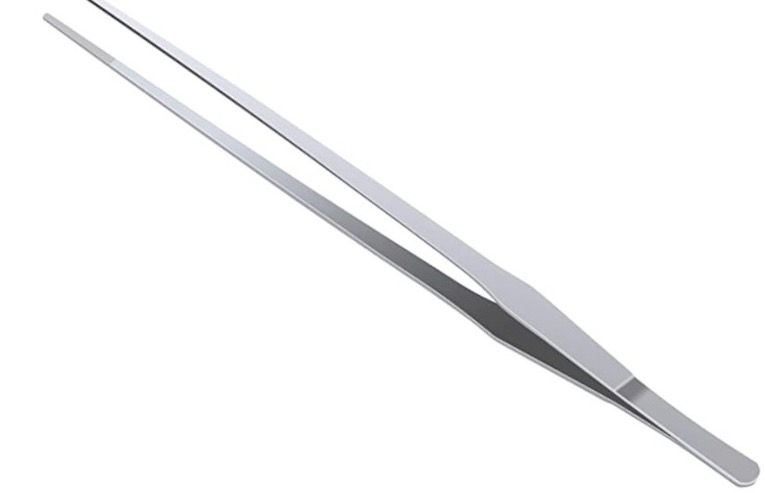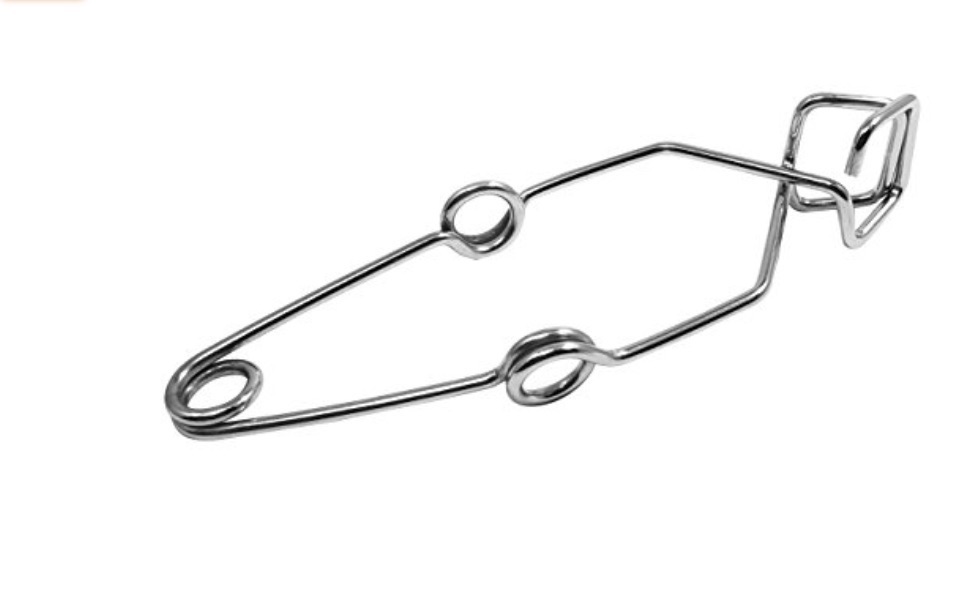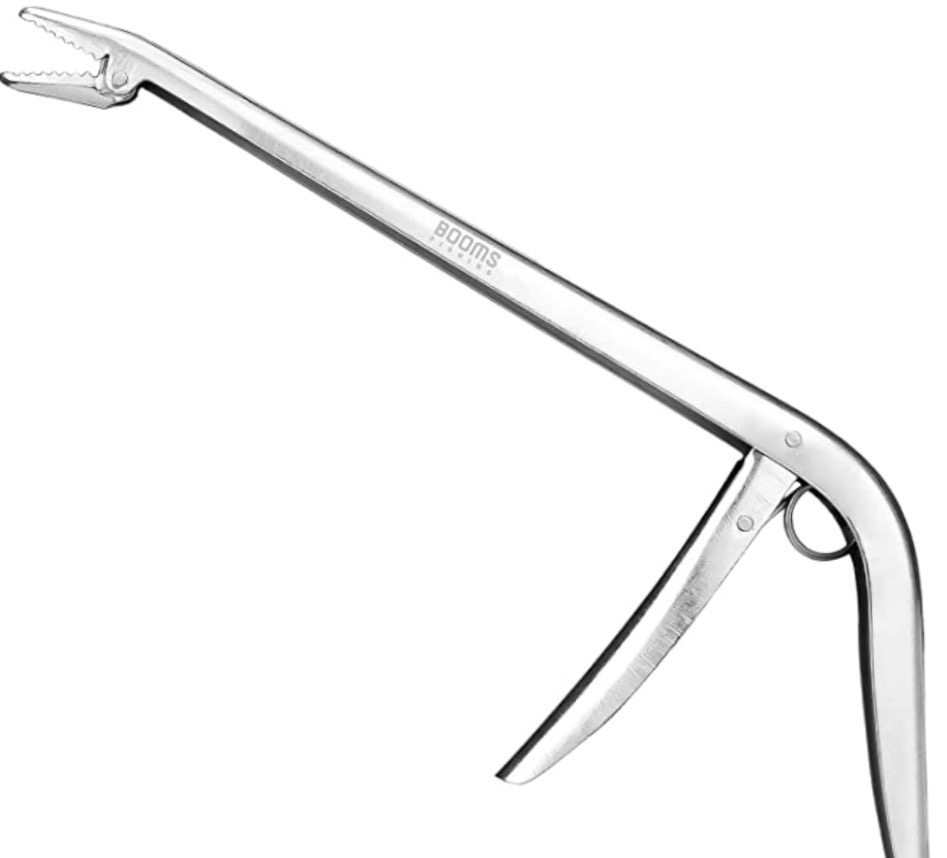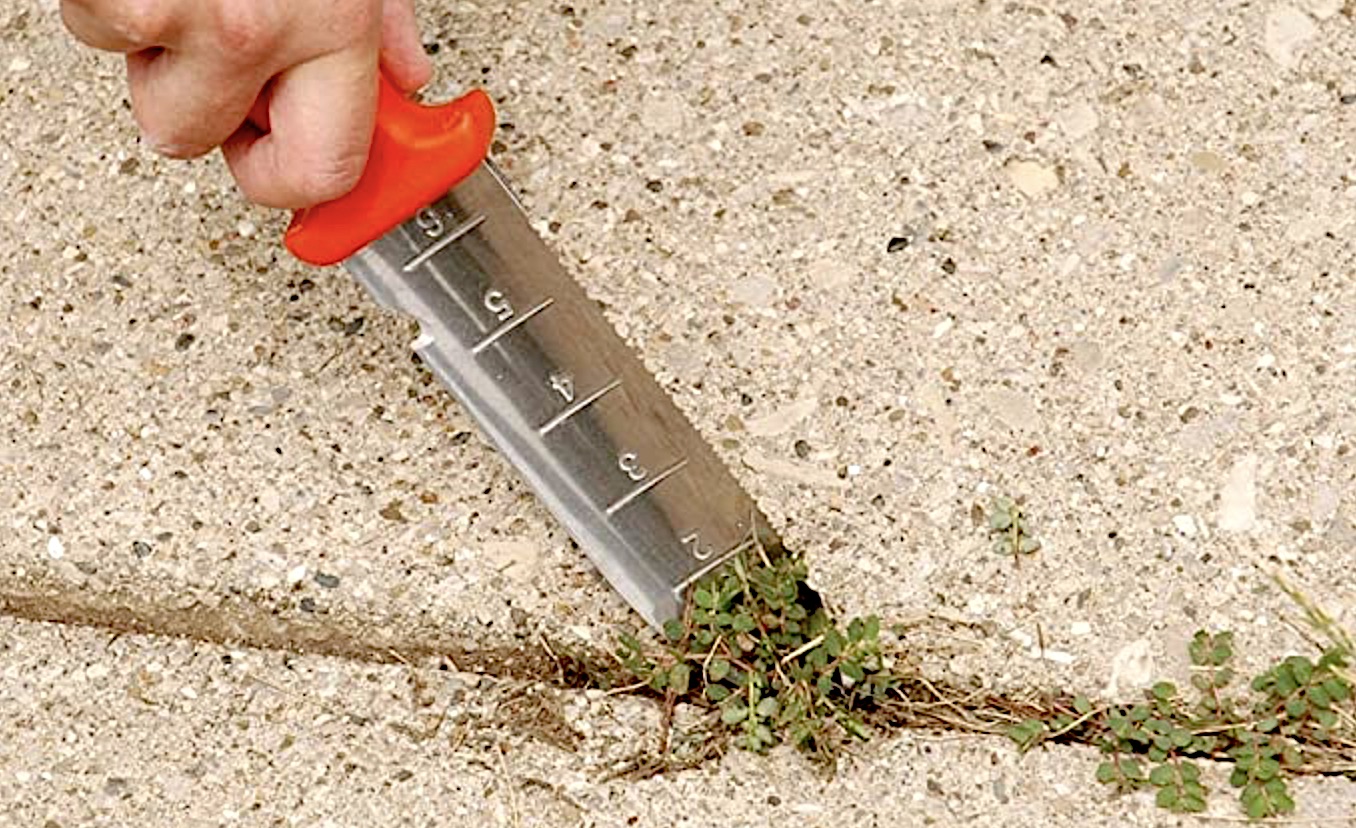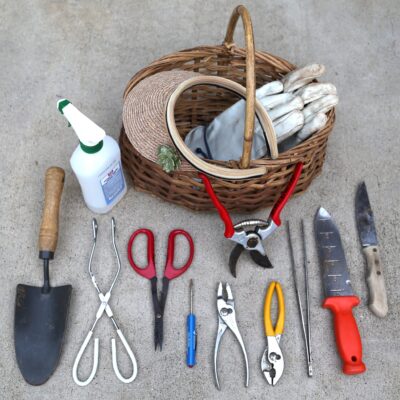Eighteen months after I planted it, my multipot echeveria garden was looking ratty. Over time, as new leaves formed from the centers of rosettes, lower leaves had dried and clung to ever-lengthening stems. Bloom spikes I'd left intact for hummingbirds were several feet long and untidy. An 18-inch-diameter, icy blue Echeveria 'Encantada' that had rotted---yes, it was heartbreaking---had left a big gap.

Echeveria pot redo: Before.
I'm pleased with the results of a recent quick redo. Total cost was under $100 for gorgeous new plants to fill gaps in four large pots. I think you'll agree that my potted echeveria garden looks better than ever. Watch me rejuvenate it in my new video: Refresh Your Echeveria Garden (6:31).

New video: Refresh Your Echeveria Garden (6:31)
Btw, I grow echeverias in pots not only to protect them, but also because these rose-like succulents are too beautiful to not see and appreciate up close. But the same concept and methods I offer here would work for flower beds, window boxes and other succulent-friendly spaces.
Step-By-Step
As I "fluff" my pots in the how-to video, you'll see me...
- Pull off any dry, crispy lower leaves. There's nothing like removing dead stuff to make plants look good again!
- Loosen the soil to make it friable, i.e. soft, so roots of new plants and cuttings can easily take hold.
- Take cuttings from filler plants. I kept just enough of each cutting's stem to anchor the rosette at the top.
- Remove bloom spikes. Cut them close to the rosette. (See what I do with them below.)
- Fill gaps with new nursery plants. Makes an instant difference!
- Spread soil into low spots. I mainly used soil from the nursery pots, but I also added potting soil to make cuttings easy to tuck in.

Pots after fluffing
Tips and tricks
A few helpful ideas and cautions:
- In the video, you'll see that, rather than digging into the soil (which would disturb roots of existing plants), I put the root balls of nursery plants on top of the soil. Elevating the plants adds texture and lushness to the composition, creating a multidimensional look of a flower garden. For more on this technique and why it works practically and aesthetically, see my posts and videos on mounded arrangements.
- Check for mealy bugs in leaf axils and in the centers of rosettes. Spray any you find with Isopropyl alcohol (70%).
- If you live where echeverias might be damaged by frost, keep old, dry leaves on the plants. They'll protect the trunk and vital core from cold and sunburn. Just know that in addition to being unsightly, dry leaves may harbor mealies and other pests.
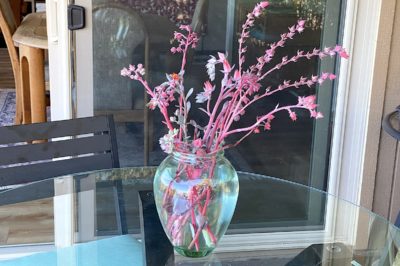
Bouquet of echeveria blooms
- Save bloom spikes for a bouquet. I set them in a vase on a patio table, so hummers can find and enjoy the blooms. Echeveria flowers stay fresh and buds continue to open for weeks. Plus they have intriguing Barbie-pink stems.
- Related varieties such as graptosedums, sedeverias and graptopetalums blend beautifully with echeverias and serve as filler plants. These intergeneric hybrids offset and trail, but they do lose their lower leaves over time, exposing ever-lengthening stems. I cut naked stems near the soil (or pull up the entire plant), and save top growth (rosettes at the tip) to use as cuttings.
What about beheading?
Several large echeverias in my potted garden could have been beheaded, but I decided not to. I wanted a quick fix, and I thought the leggy specimens still looked OK. I concealed their goosenecks with additional plants, and besides, the rosettes hadn't started to shrink. That's when you really know an echeveria needs its head sliced off, and to be replanted as a cutting: The rosette gets smaller and the diameter and length of the trunk get larger. I figured, if I can get another six to eight months out of them, why not?
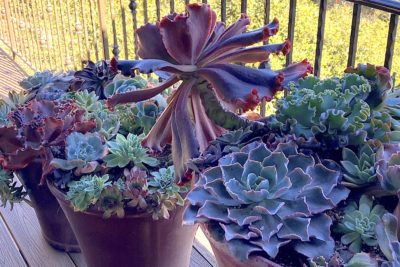
I like the way this leaning echeveria visually unifies the potted garden. Or at least, that's my excuse, ha.
My new echeverias
Don't hate me. I live near one of the best sources of spectacular, perfectly grown echeveria cultivars: Oasis Water Efficient Gardens. This retail nursery offers succulents from the largest wholesale grower in the US: Altman Plants. It's no exaggeration that every time I go to Oasis, I see something new---which is saying a lot. (When it comes to succulents, I get around.)
Altman's has a tissue culture lab and an echeveria hybridizer on staff, so the company is able to develop tough, beautiful, unusual, commercially-desirable cultivars. As you might imagine, it's an expensive undertaking to bring any new plant to market, so Altman's patents its introductions. The letters "PPA" after a cultivar name mean it's unlawful to propagate and sell it...just as it would be to plagiarize a writer or artist's work.

Clockwise from top: Echeveria 'Andromeda' PPA, E. 'Sea Dragon PPA, E. Kaliska, E. 'Autumn Flame' PPA.
If you've been to this site's Echeveria page, you know there are a staggering number of cultivars, each more beautiful than the last. Not all are from Altman Plants, but many outstanding ones are.
Those I brought home from Oasis to plug into my pots include Echeveria 'Andromeda' PPA, E. 'Autumn Flame' PPA, E. 'Elfstone', E. 'Kaliska', and E. 'Sea Dragon' PPA. So, do you need those exact varieties to do what I did in my potted garden? No! Use what's available. Echeverias are pretty much interchangeable. If you're longing for rarities, take heart, more and more are becoming available as supply catches up with demand.
If you're in San Diego area, shop for magnificent echeverias at Waterwise Botanicals as well as Oasis (at present, neither sell mail-order). Online suppliers include Wright Nursery, and to a limited extent Mountain Crest Gardens and Altman Plants' retail site.
As always, I welcome your comments and questions!
Echeveria Info, Photos & Varieties
Echeveria Info, Photos & Varieties How to grow echeverias perfectly, plus an extensive gallery, all ID’d About Echeverias Here you’ll find expert advice to help you grow echeverias perfectly, with a gallery of 150+ beautiful, notable species and cultivars. Learn about the plants’ native habitat, optimal care, light and water requirements, flowering, soil, fertilizer, pests,…
Plant an Echeveria Garden in Pots
Echeverias do great in containers, so why not plant an echeveria garden all in pots? Because echeverias have great color, symmetry and resemble fleshy flowers, my own potted collection suggests an exotic flower garden.
How to Behead and Replant Echeverias
Fancy ruffled echeverias—those large, flowerlike succulents—eventually need to be beheaded and the rosettes replanted. This is a bother, but it comes with a benefit: New clones will form on old, headless stalks. But not always. Here’s how to ensure success.
Plant a Pot with Colorful Rosette Succulents
It’s easy to plant a pot with colorful rosette succulents that makes people gasp when they see it. A sure-fire way to make one appealing is to combine succulents that are similar yet different
The post Refresh Your Echeveria Garden appeared first on Debra Lee Baldwin. Copyright © Debra Lee Baldwin.
from Debra Lee Baldwin https://ift.tt/2WSzxII
via IFTTT

